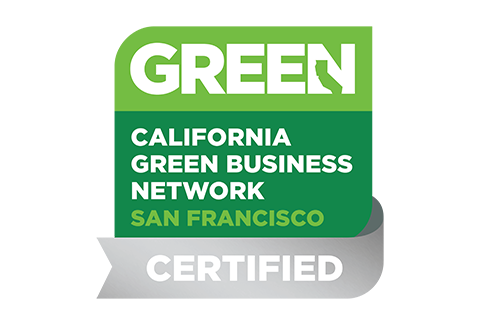What You Need to Know About San Francisco’s Inclusionary Affordable Housing Program
Executive Summary
On July 11, 2017, the San Francisco Board of Supervisors finally voted to adopt sweeping (and complex) changes to the City’s Inclusionary Affordable Housing program. Over one year ago (June 2016), San Francisco voters approved Proposition C, which dramatically increased inclusionary housing obligations, but gave the Board authority to adjust them legislatively. Accordingly, the new amendments lower the Prop. C percentages to a level intended to be feasible for developers to meet without discouraging overall housing production, but include annual, incremental increases to the percentage requirements for the on-site alternative.
In addition, the new rules create a broader range of affordability, with units targeted at low-, moderate-, and middle-income families. The new ordinance also “locks in” a project’s Inclusionary/Affordable requirements for a 30-month period following project approval. If a project has not obtained a building permit within this 30-month timeframe, the project becomes subject to then-current requirements. The ordinance also requires projects to pay the Inclusionary Affordable Housing Fee for any rent-controlled or other restricted affordable unit that is demolished or removed as part of the underlying project. Finally, the new ordinance preserves the Prop. C “grandfathering” provisions, which apply lower percentage requirements to projects that submitted a complete Environmental Evaluation application (EEA) on or before January 12, 2016, as discussed in greater detail, below.
Background
For a number of years, San Francisco has required private developers of market-rate housing to pay a fee or provide on-site or off-site restricted affordable housing units in connection with most market-rate projects. Under the current Prop. C program, development projects with 25 or more[i] units must pay a “per unit” Inclusionary Affordable Fee for 33% of the total number of units in the principal project. The “per unit” amount is determined annually by the Mayor’s Office of Housing and Community Development, and varies depending on the applicable number of bedrooms. As an alternative to paying the fee, projects may elect to provide affordable housing on-site, as part of the overall project, or off-site in a separate project or as part of another project. The current on-site percentage is 25% of the total units in the project, with a minimum of 15% of the units affordable to low-income households (i.e., households earning no more than 55% of area median income, or AMI), and 10% of the units affordable to middle-income households (i.e., households earning no more than 110% of AMI). The current off-site percentage is 33% of the total units in the project, with 20% affordable to low-income households, and 13% affordable to middle-income households.
Inclusionary Affordable Housing Fee
Under the new legislation, for project with 25+ units, the Inclusionary Affordable Fee will now be calculated at 33% for an ownership housing project (for-sale condos), and 30% for a rental housing project. In addition, the legislation expressly applies the fee to any “density bonus” units authorized under the State Density Bonus law (Cal. Gov’t Code Section 65915 et seq.), the legality of which has never been determined by the courts.
Grandfathering. Notwithstanding the percentage amounts described above, the new ordinance retains the Prop. C “grandfathering” provisions, which provide for lower percentage amounts for projects that submitted a complete EEA on or before January 12, 2016. With certain exceptions, for projects that submitted an EEA prior to January 1, 2013, the applicable percentage for calculating the fee is 20% of the total number of units provided in the project. For projects that submitted an EEA prior to January 1, 2014, the applicable percentage is 25%. For projects that submitted an EEA prior to January 1, 2015, the applicable percentage is 27.5%. For projects that submitted an EEA on or before January 12, 2016, the applicable percentage is 30%.
On-Site Alternative
Ownership/Condo Projects. For projects with 25+ units, and subject to the “grandfathering” provisions discussed below, the applicable on-site percentage for ownership/condo projects will now be 20% of the total number of units developed onsite, with a range of affordability targeted at low-, moderate-, and middle-income households, as follows.
The purchase price of 10% of the units must be set at 80% or less (low-income), with households earning up to 100% AMI eligible to purchase the units. The purchase price of 5% of the units must be set at 105% of AMI (moderate-income), with households earning from 95% to 120% of AMI eligible to purchase the units. The purchase price of the remaining 5% of the units must be set at 130% AMI (middle-income), with households earning from 120% to 150% of AMI eligible to purchase the units.
Rental Projects. For projects with 25+ units, the on-site percentage for rental projects will now be 18% of all units constructed on the project site, again, with a range of affordability, as follows.
The maximum rent of 10% of the units must be no more than 55% of AMI (low-income), with households earning up to 65% of AMI eligible to rent the units. The maximum rent of 4% of the units must be no more than 80% of AMI (moderate-income), with households earning from 65% to 90% of AMI eligible to rent the units. The maximum rent of the remaining 4% of the units must be no more than 110% of AMI (middle-income), with households earning from 90% to 130% of AMI eligible to rent the units. No studio units may be used to satisfy the middle-income on-site rental requirement.
Neighborhood-Based Cap on Purchase Price/Rental Amounts. Notwithstanding the affordability levels described above, the AMI levels for condo or rental projects may be no higher than 20% below the median rental or sales prices for the neighborhood in which the project is located, as defined by the Planning Department’s “American Community Survey Neighborhood Profile Boundaries Map.” The data to support the cap amount will be collected and revised annually.
Annual Increase in On-Site Percentage Amounts. The overall on-site percentage amounts described above increase by 1% on January 1, 2018, and again on January 1, 2019, with the additional amounts being apportioned to the “low-income” requirement. Thereafter, the percentage increase annually by 0.5%, with the additional amounts being apportioned evenly between the moderate-income and middle income requirement. The increases continue until the percentage levels reach 26% for ownership/condo projects, and 24% for rental projects.
Grandfathering. Notwithstanding the changes discussed above, the new ordinance retains the Prop. C “grandfathering” provisions, which provide for lower percentage amounts for projects that submitted a complete EEA on or before January 12, 2016. With certain exceptions, for projects that submitted an EEA prior to January 1, 2013, the applicable on-site percentage is 12%. For projects that submitted an EEA prior to January 1, 2014, the applicable percentage is 13%. For projects that submitted an EEA prior to January 1, 2015, the applicable percentage is 13.5%. For projects that submitted an EEA on or before January 12, 2016, the applicable percentage is 14.5%.
Off-Site Alternative
Ownership/Condo Projects. For projects with 25+ units, the applicable off-site percentage for ownership/condo projects will now be 33% of the total number of units developed off-site, with a range of affordability targeted at low-, moderate-, and middle-income households, as follows.
The purchase price of 18% of the units must be set at 80% or less (low-income), with households earning up to 100% AMI eligible to purchase the units. The purchase price of 8% of the units must be set at 105% of AMI (moderate-income), with households earning from 95% to 120% of AMI eligible to purchase the units. The purchase price of the remaining 7% of the units must be set at 130% AMI (middle-income), with households earning from 120% to 150% of AMI eligible to purchase the units.
Rental Projects. For projects with 25+ units, the off-site percentage for rental projects will now be 30% of all units constructed on the project site, again, with a range of affordability, as follows.
The maximum rent of 18% of the units must be no more than 55% of AMI (low-income), with households earning up to 65% of AMI eligible to rent the units. The maximum rent of 6% of the units must be no more than 80% of AMI (moderate-income), with households earning from 65% to 90% of AMI eligible to rent the units. The maximum rent of the remaining 6% of the units must be no more than 110% of AMI (middle-income), with households earning from 90% to 130% of AMI eligible to rent the units. No studio units may be used to satisfy the middle-income on-site rental requirement.
Grandfathering. Notwithstanding the changes discussed above, the new ordinance retains the Prop. C “grandfathering” provisions, which provide for lower percentage amounts for projects that submitted a complete EEA on or before January 12, 2016. With certain exceptions, for projects that submitted an EEA prior to January 1, 2013, the applicable off-site percentage is 20%. For projects that submitted an EEA prior to January 1, 2014, the applicable percentage is 25%. For projects that submitted an EEA prior to January 1, 2015, the applicable percentage is 27.5%. For projects that submitted an EEA on or before January 12, 2016, the applicable percentage is 30%.
30-Month “Safe Harbor” for Applicable Affordable Rules After Project Approval
The applicable percentages for a project will be fixed upon a project sponsor submitting a complete EEA. For a period of 30 months after project approval (in most cases, this means approval by the Planning Commission), the applicable fee and percentage amounts will be “locked in” at the levels applicable as of the date of the EEA. If the project sponsor does not obtain a building permit within this 30 month timeframe, then the project will be subject to the fees, percentage amounts, and other requirements applicable as of the date the building permit is obtained.
Fee Applicable to Demolition of Rent Control Units
Under the new ordinance, if a project results in the demolition, conversion or removal of any type of restricted/affordable housing units, including units subject to rent control, then the project sponsor must pay the Inclusionary Affordable Housing Fee equivalent for the number of affordable units removed. This fee is in addition to compliance with the Inclusionary Affordable Housing Program for the project itself.
Conclusion
The changes contained in the new ordinance are wide-ranging, and the information in this memorandum is not intended to provide an exhaustive description of the new Inclusionary Affordable Housing ordinance or of the program, generally.
[i] Note, the current (and amended) ordinance imposes lesser requirements on projects with between 10-24 units, as well. That discussion, however, is outside the scope of this client alert.


